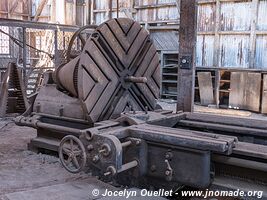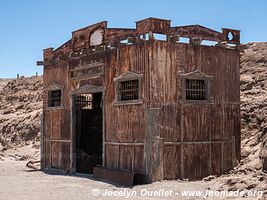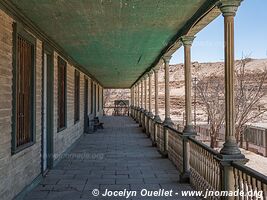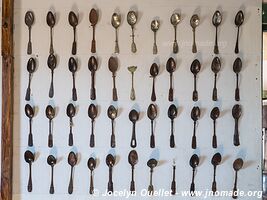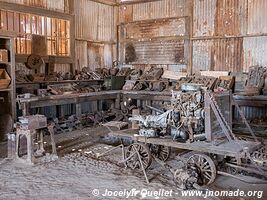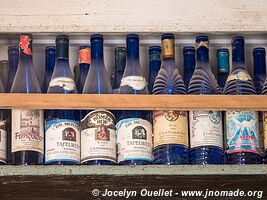Humberstone and Santa Laura
Humberstone
Nowadays, Humberstone is an interesting ghost town. In its heyday, it was a lively town with a grand theatre, a large swing pool, a ballroom, a school, basketball and tennis courts, a market, and a hotel. The mining town was flourishing in the 40s during the nitrate boom. Mining operations stopped around 1960 with the arrival of synthetic nitrate produced from ammoniac as opposed to saltpetre.
The nitrate processing plant, adjoining the urban centre, has all the buildings and equipment needed for the transformation of saltpetre (raw material) up until the finished product (nitrate).
Humberstone is a great museum and also a UNESCO World Heritage site.
The picture shows the history of the site with a few key dates.
| 1862 | Saltpetre mining starts with the 'Paradas' process (a scientific method to produce nitrate). |
| 1872 | The Humberstone plant is built under the name of Salitrera La Palma. |
| 1894 | Modernization of the plant ('Shanks' process). |
| 1930 | The Great Depression of the 30s following the market crash in 1929. |
| 1934 | Founding of the COSATAN group with 48 plants that survived the crisis (out of 270). |
| 1960 | Mining operations are stopped. End of Humberstone. |
| 1971 | The site becomes a national monument of Chile. |
| 1997 | Founding of the Museo de Salitre corporation to protect the site. |
| 2005 | Declared a UNESCO World Heritage site. |
The museum
Oficina Santa Laura
Curiously, the Oficina de Santa Laura is only 3 kilometres away from Humberstone. Like its neighbour, Santa Laura is a processing plant for transforming saltpetre into nitrate. It was built around the same years as Humberstone, but it never became as important as its competitor.































